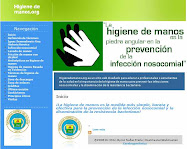The early death of the composer Wolfgang Amadeus Mozart on 5 December 1791 has fascinated the world for more than 2 centuries. It has been suggested that his final illness was caused by poisoning, renal failure, Henoch–Schönlein purpura, trichinosis, and many other conditions. The official daily register of deaths in Mozart's Vienna was evaluated to provide an epidemiologic framework into which the observations of contemporary witnesses of his death can be integrated. All recorded deaths in Vienna during November and December 1791 and January 1792 were analyzed, together with the corresponding periods in 1790 to 1791 and 1792 to 1793. The deaths of 5011 adults (3442 men, 1569 women) were recorded over these periods. The mean ages of death were 45.5 years (SD, 18.5) for men and 54.5 years (SD, 19.9) for women. Tuberculosis and related conditions accounted for the highest number of deaths; cachexia and malnutrition ranked second, and edema was the third most common cause. According to eyewitness accounts, the hallmark of Mozart's final disease was severe edema. Deaths from edema were markedly increased among younger men in the weeks surrounding Mozart's death compared with the previous and following years. This minor epidemic may have originated in the military hospital. Our analysis is consistent with Mozart's last illness and death being due to a streptococcal infection leading to an acute nephritic syndrome caused by poststreptococcal glomerulonephritis. Scarlet fever, which represents the same underlying disease from an etiologic perspective, is a less likely possibility.
lunes, 28 de febrero de 2011
S. pyogenes fue la causa de la muerte de Mozart
The early death of the composer Wolfgang Amadeus Mozart on 5 December 1791 has fascinated the world for more than 2 centuries. It has been suggested that his final illness was caused by poisoning, renal failure, Henoch–Schönlein purpura, trichinosis, and many other conditions. The official daily register of deaths in Mozart's Vienna was evaluated to provide an epidemiologic framework into which the observations of contemporary witnesses of his death can be integrated. All recorded deaths in Vienna during November and December 1791 and January 1792 were analyzed, together with the corresponding periods in 1790 to 1791 and 1792 to 1793. The deaths of 5011 adults (3442 men, 1569 women) were recorded over these periods. The mean ages of death were 45.5 years (SD, 18.5) for men and 54.5 years (SD, 19.9) for women. Tuberculosis and related conditions accounted for the highest number of deaths; cachexia and malnutrition ranked second, and edema was the third most common cause. According to eyewitness accounts, the hallmark of Mozart's final disease was severe edema. Deaths from edema were markedly increased among younger men in the weeks surrounding Mozart's death compared with the previous and following years. This minor epidemic may have originated in the military hospital. Our analysis is consistent with Mozart's last illness and death being due to a streptococcal infection leading to an acute nephritic syndrome caused by poststreptococcal glomerulonephritis. Scarlet fever, which represents the same underlying disease from an etiologic perspective, is a less likely possibility.
domingo, 13 de febrero de 2011
Suscribirse a:
Entradas (Atom)





